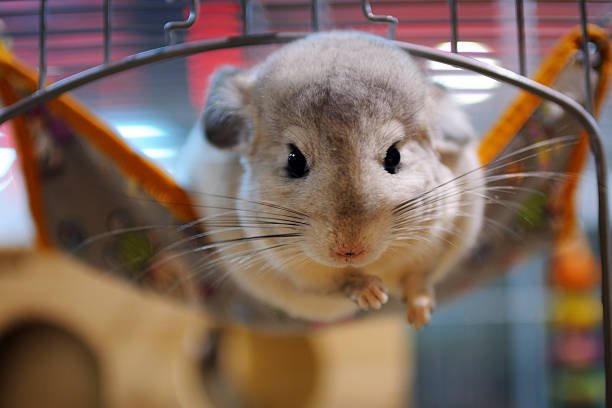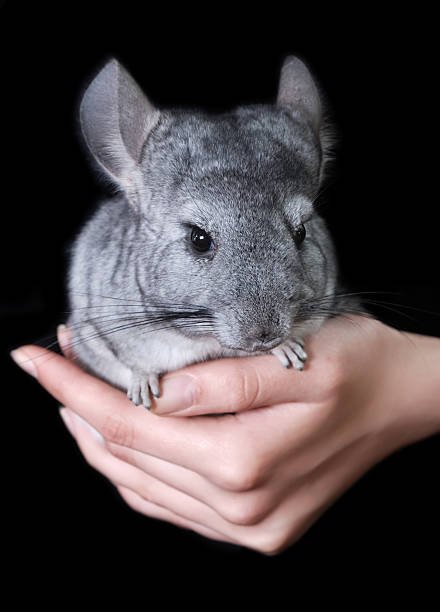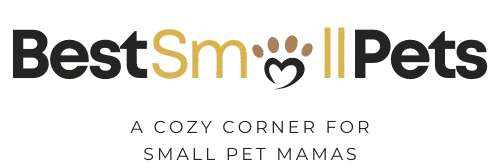Tiny Poops, Big Facts: What Your Chinchilla’s Droppings Are Telling You
This post contains affiliate links. This means I will make a commission at no extra cost to you should you click through and make a purchase. Read the full disclosure here.It’s not the most glamorous part of chinchilla ownership—but it is one of the most important. Chinchilla poop might be small, but it can tell you a lot about your pet’s health, diet, and overall well-being. Whether you’re a new owner or a seasoned chin parent, knowing what’s normal, what’s not, and how to manage all that poop is key to keeping your chinchilla happy (and your home clean).
Step-by-Step Guide: Chinchilla Poop — What’s Normal, What’s Not, and What to Do About It
Step 1: Know What Healthy Chinchilla Poop Looks Like
A healthy chinchilla produces hundreds of tiny, firm, dark brown pellets every single day. Each dropping is about the size of a grain of rice—dry, slightly oval, and odorless. If your chinchilla’s poop checks all those boxes, congrats—you’ve got a healthy digestive system on your hands. These little guys have a fast metabolism and are constantly eating hay, which means the output never really stops.
💡 Pro tip: If you notice your chinchilla’s poop is suddenly wet, sticky, too soft, or oddly shaped, that’s a sign something’s off.
Step 2: Understand the Role of Diet in Poop Quality

A chinchilla’s diet has a direct impact on their poop. The core of their nutrition should be:
- Unlimited timothy hay for fiber
- High-quality chinchilla pellets
- Minimal treats (especially no sugary or high-moisture ones)
Avoid fruits, vegetables, and sugary snacks that can cause soft stools or digestive upset. Think of hay as the engine that powers your chin’s gut—and clean, healthy poop as the result of a smooth-running system.
Step 3: Don’t Panic About Quantity
Yes—chinchillas poop a lot. Like, 200 to 300 times a day a lot. It may seem excessive, but it’s perfectly normal. The good news? Their poop is dry and easy to clean. The bad news? It’s everywhere—especially if your chinchilla gets a lot of playtime outside the cage. While you can reduce spread with fleece mats or confined play areas, you can’t really stop the output. It’s part of the chinchilla experience!
Step 4: Learn to Spot Warning Signs
Your chinchilla’s droppings can be the first sign that something’s wrong. Watch out for:
- Small, dry, or misshapen poop – could indicate dehydration or gut slowdown.
- Wet or mushy poop – possibly caused by stress, poor diet, or illness.
- No poop at all – this is a red alert. GI stasis is life-threatening in chinchillas and needs immediate vet care.
Any change in frequency, texture, or shape should prompt a closer look at their behavior, appetite, and hydration.
Step 5: Hydration = Healthy Poop
Chinchillas don’t drink a ton of water, but they still need access to clean, fresh water at all times. Dehydration can quickly affect digestion and lead to smaller or harder poops. Use a water bottle over a bowl to prevent contamination, and check daily to make sure it’s working. You can also lightly pinch test your chin’s fur (gently lift and release skin between the shoulders) to check for hydration—if it doesn’t bounce back quickly, consult a vet.
Step 6: Manage the Mess Effectively
Poop cleanup becomes part of your daily routine with chinchillas, but it doesn’t have to be a hassle. Here’s how to stay ahead of the mess:
- Use fleece liners that can be shaken out and washed
- Add a drop tray under wire flooring to separate droppings
- Keep a handheld vacuum or dustpan nearby for playtime cleanup
- Spot-clean daily and deep-clean weekly
Making these steps routine helps reduce odor and keeps your chin’s space healthy.
Step 7: Poop Behavior During Playtime
Let your chinchilla out for some zoomies, and don’t be surprised if you’re left with a little trail of pellets. Chinchillas poop while moving, resting, climbing—you name it. They don’t associate poop with a specific location like urination. You can minimize the spread with a playpen or chin-proofed room, but the occasional stray poop on your shirt is just part of the fun.
💡 Bonus Tip: Avoid placing your chin on furniture or beds unless you’re ready for tiny surprises.
Step 8: Poop as a Health Log
Think of your chinchilla’s poop as a built-in health tracker. Changes in poop are often the first sign that something’s wrong before other symptoms show up. That’s why it’s a good idea to:
- Check droppings during daily spot-cleaning
- Monitor patterns if they’re stressed or traveling
- Take note of any changes when you introduce new foods or hay
A simple glance at their litter area or cage floor can tell you more than you’d think.

Step 9: When to Call the Vet
Here’s when poop becomes a medical issue:
- No droppings for 8–12 hours
- Soft or sticky poop that lasts longer than a day
- Blood, mucus, or parasites in the stool
- Sudden decrease in quantity
Don’t wait it out. Chinchillas hide illness very well, and gut issues can escalate fast. If anything feels off, especially if it’s paired with lethargy or appetite loss, get to a vet who specializes in exotic pets.
Final Thoughts
Poop might not be the cutest part of chinchilla ownership—but it’s one of the most useful windows into their health. Once you understand what’s normal and how to manage it, the constant stream of tiny poops becomes just another part of the routine. Keep a close eye on their droppings, keep their environment clean, and your chinchilla will reward you with years of healthy, fluffy companionship.













